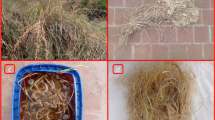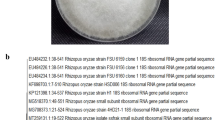Abstract
Scientists have been searching for biodegradable natural materials that can be used in place of synthetic materials that have not been biodegradable for a long time. Especially in automotive, space, furniture, construction, medical and packaging industries, synthetic composite materials are used abundantly. For this reason, interest in biodegradable biocomposites is increasing. In recent years, many stem fibers such as flax, hemp, kenaf and jute have been started to be used as an alternative to reinforcing fibers traditionally used in composite materials. In fact, researches have begun to focus on the assessment of agricultural plant stem wastes in fiber extraction because of their sustainable, recyclable, biodegradable, renewable and economical properties. Stem waste fibers can show different characteristics according to the plant from which they are obtained. Okra is an agricultural plant that is easy and effortless to cultivate because of its drought-resistant nature and low water requirements. The okra fibers are obtained from the stem wastes of the okra plant (Abelmoschus esculentus) remaining on the fields after harvest. The okra fibers have a low ratio of lignin (7.1%), which causes yellowing and photochemical degradation, and have high molecular weight. For this reason, properties such as color fastness and strength are good. The physical and chemical properties of the okra fibers, which have a high cellulose content (67.5%), resemble other traditional body fibers. In terms of usability in the production of composites, cellulose is the most important content in natural fibers. The higher the cellulosic ratio, the stronger the fiber, and so the more suitable to use it as a reinforcement. Recent studies have shown that the mechanical strength and modulus of okra fibers are good and that they have the potential to be used as a reinforcing element in polymer matrix composites. Okra fibers can be modified by environmentally friendly chemical surface modifications, besides improving their mechanical properties such as strength, these treatments increase their absorbency in subsequent processing by providing surface roughness.
Access this chapter
Tax calculation will be finalised at checkout
Purchases are for personal use only
Similar content being viewed by others
References
Alam M, Khan G (2007) Chemical analysis of okra bast fiber (Abelmoschus esculentus) and its physico-chemical properties. J Text Appar Technol 5(4):1–9
AOAC Official Methods of Analysis (2016) [Online]. Available: http://www.aoac.org/aoac_prod_imis/AOAC/Publications/Official_Methods_of_Analysis/AOAC_Member/Pubs/OMA/AOAC_Official_Methods_of_Analysis.aspx?hkey=5142c478-ab50-4856-8939-a7a491756f48. Accessed 13 May 2017
Arifuzzaman Khan G, Ahsanul Haque M, Shamsul Alam M (2014) Studies on okra bast fibre-reinforced phenol formaldehyde resin composites. Biomass and Bioenergy. Springer International Publishing, Springer, pp 157–174
Arifuzzaman Khan GM, Shaheruzzaman M, Rahman MH, Abdur Razzaque SM, Islam MS, Alam MS (2009) Surface modification of okra bast fiber and its physico-chemical characteristics. Fibers Polym 10(1):65–70
Bledzki AK, Gassan J (1999) Composites reinforced with cellulose based fibres. Prog Polym Sci 24:221–274
De Rosa IM, Kenny JM, Maniruzzaman M, Moniruzzaman MD, Monti M, Puglia D, Santulli C, Sarasini F (2011) Effect of chemical treatments on the mechanical and thermal behaviour of okra (Abelmoschus esculentus) fibres. Compos Sci Technol 71:246–254
De Rosa IM, Kenny JM, Puglia D, Santulli C, Sarasini F (2010) Morphological, thermal and mechanical characterization of okra (Abelmoschus esculentus) fibres as potential reinforcement in polymer composites. Compos Sci Technol 70(1):116–122
Fortunati E, Puglia D, Monti M, Santulli C, Maniruzzaman M, Kenny JM (2013a) Cellulose nanocrystals extracted from okra fibers in PVA nanocomposites. J Appl Polym Sci 128:3220–3230
Fortunati E, Puglia D, Monti M, Santulli C, Maniruzzaman M, Foresti ML, Vazquez A, Kenny JM (2013b) Okra (Abelmoschus esculentus) fibre based PLA composites: mechanical behaviour and biodegradation. Journal Polym Environ 21:726–737
Franklin WM (1982) Okra, potential multiple-purpose crop for the temperate zones and tropics. Econ Bot 36(3):340–345
Gassan J, Bledzki AK (1998) Alkali treatment of jute fibers : relationship between structure and mechanical properties. J Appl Polym Sci 623–629
Hamideh H, Mohini S, Lucia HM (2014) Modification and characterization of hemp and sisal fibers. J Nat Fibers 11(2):144–168
Islam MS, Pickering KL (2014) An empirical equation for predicting mechanical property of chemically treated natural fibre using a statistically designed experiment. Fibers Polym 15(2):355–363
Khan G, Alam M (2013) Surface chemical treatments of jute fiber for high value composite uses. Res Rev J Mater Sci 1(2):39–44
Kumar DS, Tony DE, Praveen KA, Kumar KA, Srinivasa RDB, Nadendla R (2013) A review on: Abelmoschus esculentus (okra). Int Res J Pharm Appl Sci 3(34). www.irjpas.com
Li X, Lope A, Tabil G, Panigrahi S (2007) Chemical treatments of natural fiber for use in natural fiber-reinforced composites: a review. J Polym Environ 15:25–33
Moniruzzaman M, Maniruzzaman M, Gafur MA, Santulli C (2009) Lady’s finger fibres for possible use as a reinforcement in composite materials. J Biobased Mater Bioenergy 3:1–5
Mwaikambo LY, Ansell MP (2002) Chemical modification of hemp, sisal, jute, and kapok fibers by alkalization. J Appl Polym Sci 84(12):2222–2234
Onyedum O, Aduloju SC, Sheidu SO, Metu CS, Owolabi OB (2016) Comparative mechanical analysis of okra fiber and banana fiber composite used in manufacturing automotive car bumpers. Am J Eng Technol Soc 2(6):193–199
Srinivasababu N (2015) An overview of okra fibre reinforced polymer composites. In: IOP Conference Series: Materials Science and Engineering, vol 83
Srinivasababu N, Murali Mohan Rao K, Suresh Kumar J (2009) Tensile properties characterization of okra woven fiber reinforced polyester composites. Int J Eng 3(4):403–412
Van Soest PJ, Wine RH (1968) Determination of lignin and cellulose in acid-detergent fiber with permanganate. J Assoc Official Anal Chem 51:780–785
Yılmaz ND, Konak S, Yılmaz K, Kartal AA, Kayahan E (2016) Characterization, modification and use of biomass: okra fibers. Bioinspired Biomim Nanobiomaterials 5(3):85–95
Acknowledgement
This work was supported by TUBITAK 1001 under grant 215M984.
Author information
Authors and Affiliations
Corresponding author
Editor information
Editors and Affiliations
Rights and permissions
Copyright information
© 2018 Springer Nature Singapore Pte Ltd.
About this chapter
Cite this chapter
Kocak, E.D., Merdan, N., Mistik, I., Sahinbaskan, B.Y. (2018). Fiber Extraction from Okra Plant Agricultural Wastes, Their Characterizations and Surface Modifications by Environmental Methods. In: Muthu, S. (eds) Sustainable Innovations in Textile Fibres. Textile Science and Clothing Technology. Springer, Singapore. https://doi.org/10.1007/978-981-10-8578-9_3
Download citation
DOI: https://doi.org/10.1007/978-981-10-8578-9_3
Published:
Publisher Name: Springer, Singapore
Print ISBN: 978-981-10-8577-2
Online ISBN: 978-981-10-8578-9
eBook Packages: EngineeringEngineering (R0)




